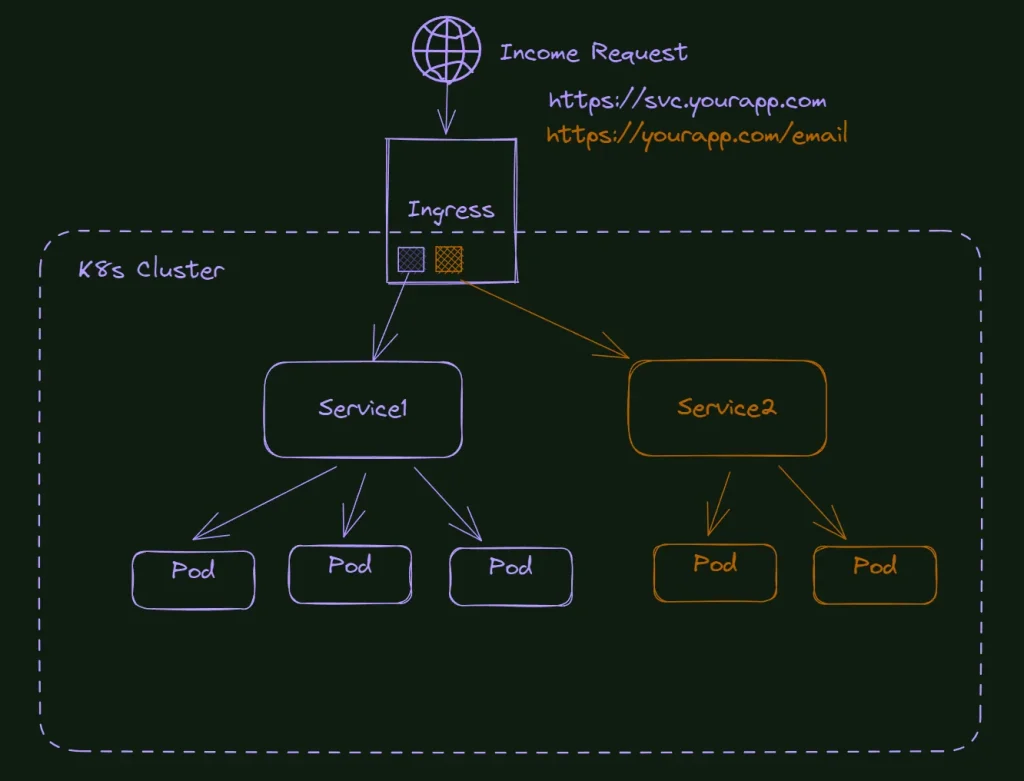As businesses increasingly embrace the power and scalability of cloud computing, Kubernetes has emerged as a leading container orchestration platform. While Kubernetes offers remarkable benefits in terms of flexibility and resource utilization, it is essential for organizations to effectively manage the costs associated with running applications in a Kubernetes environment. This article will explore the key principles for effective Kubernetes cost management, discuss strategies to optimize spending, delve into useful cost management tools, and uncover the numerous benefits of implementing a robust cost management framework.
To better understand the significance of cost management in Kubernetes, let’s consider it akin to managing electricity consumption in a bustling city. Just as city officials must carefully monitor and regulate the energy usage of streetlights, buildings, and public spaces to ensure efficient allocation of resources and reduce waste, Kubernetes cost management focuses on monitoring and controlling the resources allocated to containers, applications, and services within the cloud infrastructure. By employing effective cost management practices, organizations can avoid overprovisioning, optimize resource utilization, and ultimately achieve cost efficiency, much like a city striving to minimize energy expenses while maintaining functionality and enhancing sustainability.

Kubernetes has become the go-to platform for managing containerized applications in cloud-native environments. Its scalability and flexibility make it an ideal choice for organizations leveraging microservices architecture. However, with the rapid growth of Kubernetes environments, cost management has become a major concern for many teams. In this article, we will explore the challenges of Kubernetes cost management and discuss strategies to manage and optimize costs effectively.
💡 New to Kubernetes and unsure how to set up your first cluster? Check out our article: Why is Kubernetes so difficult? And how to learn it fast
The article will be structured into four main sections. First, we will explore the key principles for effective Kubernetes cost management, highlighting the importance of creating a culture, fostering collaboration between teams, and educating and documenting cost management practices. Next, we will delve into strategies that can be implemented to optimize Kubernetes costs, including right-sizing the Kubernetes environment, utilizing Kubernetes labels for cost tracking, and making cost monitoring and alerting a daily operation. The third section will introduce popular Kubernetes cost management tools such as Kubecost, CloudZero, and Loft, providing readers with valuable options to enhance their cost management efforts. Finally, we will discuss the benefits of effective Kubernetes cost management, including cost savings, improved cost management efficiency, performance, cost optimization, and real-time cost visibility and control.
Table of Contents:
- Key Principles for Effective Kubernetes Cost Management
1.1 Create a Cost Management Culture
1.2 Foster Collaboration Between Teams
1.3 Educate and Document Cost Management Practices - Strategies for Kubernetes Cost Management
2.1 Right-Size Your Kubernetes Environment
2.2 Use Kubernetes Labels for Cost Tracking
2.3 Make Cost Monitoring and Alerting a Daily Operation - Kubernetes Cost Management Tools
3.1 Kubecost
3.2 CloudZero
3.3 Loft
3.4 Other tools - Benefits of Effective Kubernetes Cost Management
4.1 Cost Savings
4.2 Improved Cost Management Efficiency
4.3 Performance and Cost Optimization
4.4 Real-Time Cost Visibility and Control - A success case: “CloudSprint“
We invite you to dive into this comprehensive guide on Kubernetes cost management, where you will gain valuable insights into key principles, effective strategies, essential tools, and the numerous benefits of implementing a robust cost management framework. Whether you are new to Kubernetes or seeking to optimize your existing deployment, this article will provide the knowledge and tools to navigate the complex world of managing costs in the cloud. Let’s embark on this cost-saving journey together!
Understanding the Complexity of Kubernetes Cost Management
Kubernetes environments can quickly become complex and resource-intensive, leading to rising costs. According to a survey by the Cloud Native Computing Foundation (CNCF), 68% of respondents reported an increase in Kubernetes costs, with half experiencing a jump of over 20% per year. The self-service deployment feature in Kubernetes allows developers to allocate maximum storage, CPU, and memory to ensure optimal performance, but this often results in overprovisioning and wasted resources. The lack of automated mechanisms to tear down unused environments also contributes to cost escalation.
One of the major challenges in Kubernetes cost management is the lack of visibility into actual spending. Cloud provider bills typically only provide line items for services like AWS EC2 or EKS, offering little context on the actual workloads and associated costs. Without real-time visibility into cost overruns, teams cannot respond to sudden cost spikes promptly. Furthermore, the manual process of calculating Kubernetes costs using spreadsheets and cloud provider bills is time-consuming, inefficient, and prone to inaccuracies.
1. Key Principles for Effective Kubernetes Cost Management
Effective Kubernetes cost management is crucial for organizations seeking to maximize the value of their cloud investments. It is essential to adhere to key principles that guide the process to achieve optimal cost efficiency. These principles encompass creating a cost management culture emphasizing accountability and responsibility, fostering collaboration between teams to align cost optimization efforts, and educating and documenting cost management practices for informed decision-making. By embracing these principles, businesses can navigate the complex landscape of Kubernetes cost management and unlock significant savings while ensuring the scalability and performance of their cloud-based applications.
Organizations should adopt key principles and best practices to tackle the challenges of Kubernetes cost management. These principles set the foundation for successful cost management and enable teams to gain control over their Kubernetes spending.
1.1 Create a Cost Management Culture
Developing a cost management culture is crucial for effective Kubernetes cost management. It involves cultivating cost management expertise and providing developers and finance teams with the necessary skills and tools to manage costs. This can be achieved by integrating Kubernetes cost management into existing cloud cost management initiatives. Collaboration between engineering and finance is essential, as developers may not have cost optimization skills, and accountants may question the high cost of cloud services.
2.1 Foster Collaboration Between Teams
Successful Kubernetes cost management requires collaboration between different teams, especially engineering, and finance. A cost management tool can be a collaboration platform, allowing developers to make minor adjustments to reduce costs and build a business case for additional budget. By documenting procedures and processes, not Kubernetes-savvy stakeholders can interact with cost reporting effectively.
3.1 Educate and Document Cost Management Practices
Building cross-organization expertise in Kubernetes and cost management is essential for effective cost control. Organizations should document procedures and processes for calculating Kubernetes costs, including internal training, cheat sheets, and basic training materials. These resources will enable stakeholders to understand and interact with cost reporting, promoting transparency and effective communication.
2. Strategies for Kubernetes Cost Management
Implementing effective strategies for Kubernetes cost management is essential for organizations aiming to optimize their cloud spending and maximize resource utilization. These strategies encompass a range of tactics, including right-sizing the Kubernetes environment to align resource allocations with actual workload demands, utilizing Kubernetes labels for granular cost tracking and allocation, and making cost monitoring and alerting a daily operation to identify and address cost anomalies proactively. By employing these strategies, businesses can streamline their Kubernetes costs, eliminate wastage, and ensure cost-effective operations while maintaining the scalability and performance of their cloud-native applications.
Once the foundational principles are established, organizations can implement strategies to manage and optimize Kubernetes costs. These strategies focus on right-sizing the Kubernetes environment, leveraging Kubernetes labels for cost tracking, and integrating cost monitoring and alerting into daily operations.
2.1 Right-Size Your Kubernetes Environment
Right-sizing the Kubernetes environment is a crucial strategy for cost management. This involves carefully managing the number and types of resources available to address the organization’s needs. By setting pod requests and limits, teams can control resource usage across containers and limit the resources required by each pod. The Cloud Native Computing Foundation (CNCF) recommends targeting the pod level for FinOps, enabling teams to optimize resource allocation and reduce costs.
2.2 Use Kubernetes Labels for Cost Tracking
Kubernetes labels can identify, and segment Kubernetes objects into groups, allowing finance teams to track resource usage across different applications and environments. By leveraging labels for cost tracking, organizations can gain insights into cost allocation and make informed decisions about resource optimization.
2.3 Make Cost Monitoring and Alerting a Daily Operation
Cost monitoring and alerting should be integrated into daily operations to manage Kubernetes costs effectively. Developers should be equipped with tools and strategies to detect and respond to CPU and memory usage that exceeds current needs, avoiding unnecessary costs. By creating detailed cost reports and dashboards, teams can foster collaboration between DevOps and finance, facilitating a common understanding of cost management goals.
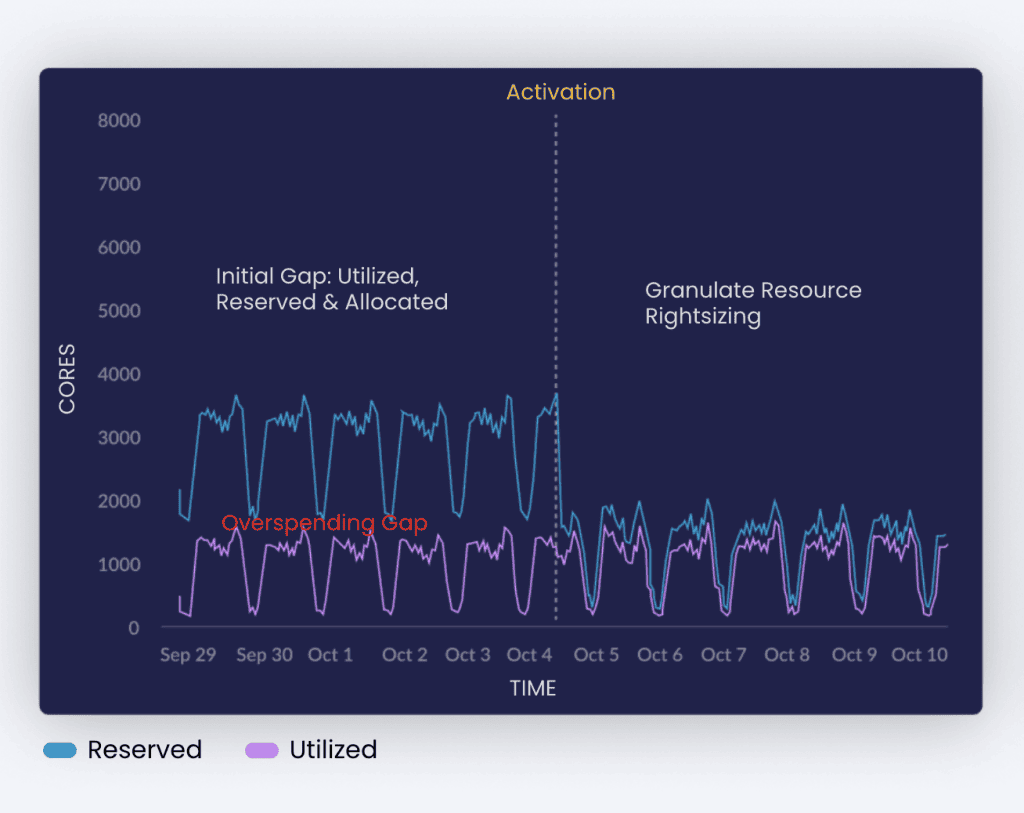
3. Kubernetes Cost Management Tools
As organizations embrace the power of Kubernetes for container orchestration, effective cost management becomes paramount in ensuring efficient resource allocation and maximizing return on investment. To tackle this challenge, a wide range of Kubernetes cost management tools has emerged, providing businesses with the necessary capabilities to monitor, analyze, and optimize their cloud spending. These tools offer real-time cost visibility, resource utilization tracking, cost allocation, and even automated optimization recommendations. In this section, we will explore some of the top Kubernetes cost management tools available, empowering readers to make informed decisions and leverage the right tools to manage and control their Kubernetes costs effectively, ultimately driving cost efficiency and business success in the cloud.
Several Kubernetes cost management tools help organizations track, monitor, and optimize their Kubernetes costs. These tools provide insights into cost allocation, utilization, and performance, enabling teams to make data-driven decisions for cost optimization. Here are three popular Kubernetes cost management tools:
3.1 Kubecost
Kubecost, an open-source Kubernetes cost management tool, provides organizations with comprehensive cost allocation, monitoring, and reporting capabilities. With Kubecost, businesses can easily track costs based on namespace, deployment, service, and more, regardless of whether their environments are on-premises or in the cloud. By offering visibility into Kubernetes and out-of-cluster spending, Kubecost empowers teams to identify and seize cost-saving opportunities, enabling more efficient resource allocation and optimization within their Kubernetes deployments.

Key benefits
The Kubernetes cost management tool offers a range of valuable features to streamline cost monitoring and optimization. It provides out-of-the-box cost metrics in Prometheus format, allowing easy integration with observability tools and DevOps automation stages. With a built-in cluster health score and recommendations, users gain insights into the overall health of their Kubernetes environment and actionable suggestions for cost optimization. The tool also offers configurable real-time alerts, ensuring timely notifications of cost anomalies and automated recurring cost reports, simplifying the process of monitoring and analyzing spending patterns. These features collectively enable organizations to proactively manage costs, make data-driven decisions, and achieve greater cost efficiency in their Kubernetes deployments.
Pricing
Kubecost offers a range of flexible pricing plans to cater to different business needs. Their forever-free tier provides cost monitoring, allocation for a single cluster, and a 15-day metrics retention period. For organizations requiring more extensive capabilities, Kubecost offers business plans starting at $449 monthly for 100 nodes and $799 monthly for 200 nodes. These paid plans include extended metrics retention, saving reports, and team updates and notifications. Additionally, Kubecost provides enterprise plans tailored to larger organizations’ requirements. Regardless of the plan chosen, Kubecost ensures unlimited users, maintains data privacy by not sharing infrastructure data, and offers open-core software for transparency and customization.
They also offer a self-managed open-source product called OpenCost.io.
3.2 CloudZero
CloudZero offers a comprehensive suite of cost optimization and analysis solutions tailored for cloud environments, including Kubernetes cost analysis, unit cost analysis, and SaaS COGS management. Operating akin to infrastructure as code, CloudZero allows users to define cost organization structures using code artifacts, providing a customizable and flexible approach to cost management. With its advanced capabilities, users can drill down into costs at various levels, such as cost per customer, cost per feature, cost per environment, cost per team, or cost per product. CloudZero integrates with Kubernetes, supports shared costs in multi-tenant applications, and accommodates non-taggable AWS services. The platform effortlessly ingests data from major cloud providers like AWS, Azure, and GCP and popular software platforms, including New Relic, MongoDB, Databricks, and Snowflake. Users can set cost anomaly alerts, gain insights into cost breakdowns by product, and receive regular weekly updates to stay informed and control their cloud expenses.
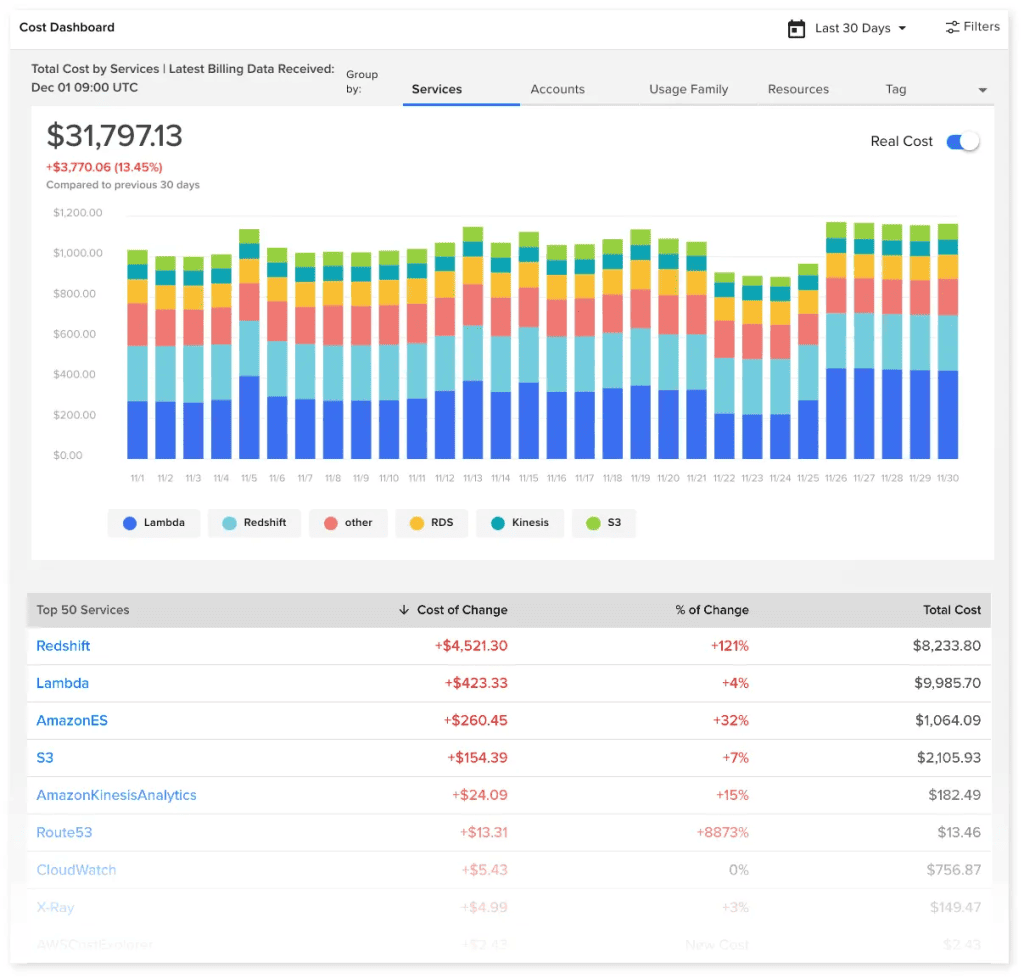
Key benefits
CloudZero offers a range of key benefits to empower businesses in their cost management endeavors. With its SaaS COGS (Cost of Goods Sold) measurement and granular cost visibility, organizations gain a deeper understanding of their cost structures and can make informed decisions to optimize expenses. CloudZero provides cost intelligence even for untagged, untaggable, and shared resources, enabling comprehensive cost analysis and allocation across the entire infrastructure. With a single dashboard that integrates data from AWS, Azure, GCP, Snowflake, New Relic, and Kubernetes, users have a centralized view of their cost landscape, simplifying monitoring and analysis across multiple platforms and services. CloudZero empowers businesses with actionable insights and a unified platform to streamline cost management across their diverse cloud ecosystem.
Pricing
Their CloudZero on-demand pricing is based on the units of $1K/month AWS spend (overages and limitations apply). Their CloudZero Custom plan provides Unlimited access to the CloudZero platform, regardless of your AWS spend. Additional usage is charged monthly for each $1K AWS spent over the contract – $19/unit.
| Units | 1 Month | 12 Months | 24 Months | 36 Months |
|---|---|---|---|---|
| CloudZero On Demand | $19 | $209 | $399 | $608 |
| CloudZero Custom | $170,000 | $2,000,000 | $4,000,000 | $6,000,000 |
3.3 Loft
Loft is a purpose-built Kubernetes control plane that prioritizes self-service and multi-tenancy. Compatible with industry-standard Kubernetes clusters, Loft offers a comprehensive suite of features for effectively managing resource allocation and usage. By seamlessly integrating with monitoring tools like Prometheus and Grafana, Loft enables organizations to gain valuable insights into their Kubernetes environment. Additionally, Loft provides convenient capabilities for configuring auto-delete functionality and implementing account quotas, streamlining resource management processes. With its automation capabilities, Loft empowers organizations to optimize costs, enhance resource efficiency, and foster a seamless self-service experience within their Kubernetes infrastructure.
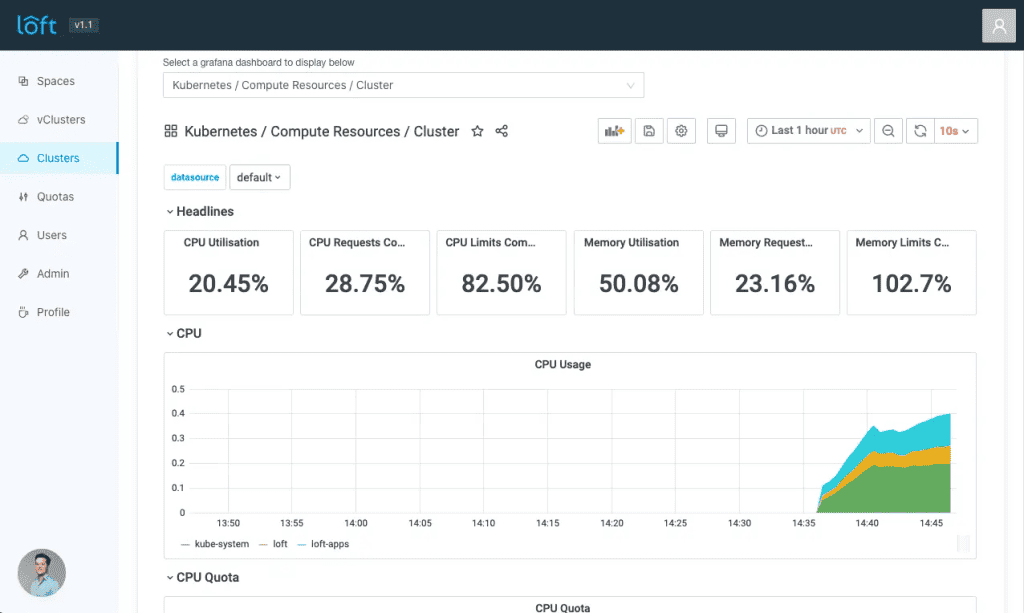
Key benefits
Loft offers a range of key benefits that simplify Kubernetes cluster management and drive cost efficiency. With its easy-to-use self-serve tools, organizations can efficiently manage their Kubernetes clusters without requiring extensive technical expertise. Loft’s automatic idle detection and sleep mode functionality intelligently identifies idle resources and automatically puts them into a low-cost sleep state, resulting in significant cost savings. Additionally, Loft enables sharing clusters across multiple teams and users, promoting collaboration and resource optimization while maintaining security and isolation. These benefits combine to streamline cluster management, reduce costs, and maximize the utilization of Kubernetes resources across the organization.
Pricing
Loft has a free version allows up to 3 users and 2 clusters. The paid version costs $20/user/month. They also have an enterprise version available. Their open-source tools are also great tools to make using Kubernetes easier.
3.4 Other Tools
In this presentation, we explored a variety of tools designed to facilitate effective cost management in Kubernetes environments. These tools offer a range of functionalities, such as cost allocation, monitoring, reporting, and optimization. By leveraging these tools, organizations can gain visibility into their Kubernetes costs, identify areas for cost savings, optimize resource allocation, and drive overall cost efficiency. Each tool has unique strengths and benefits, catering to different organizational needs and preferences. By selecting the appropriate tools based on specific requirements, businesses can successfully manage and control their Kubernetes costs, ultimately achieving financial sustainability and maximizing the value of their cloud investments.
Anodot
Anodot is a business intelligence platform with analytical features built around revenue-critical business incidents. Their cloud cost management tool directly links business KPIs and cloud spending. The tool also provides personalized recommendations.
Cast.ai
It provides an automated approach to cloud cost optimization and monitoring. Cast.ai supports AWS, GCP, Azure, and self-hosted Kubernetes. It can automatically analyze your cluster and prepare a custom savings report in 5 minutes. They claim their clients save an average of 63% on their cloud bills.
Vantage
Vantage.sh brings all your cloud costs to one central place. With integrations with AWS, Snowflake, Datadog, and more, it securely accesses cost data. You can understand per-resource costs, forecast future savings, dive into Kubernetes costs, and get alerts for unexpected changes.
Yotascale
The engineering-centric cloud cost management tool is built to scale with cloud complexity. It provides a centralized view of all your multi-cloud costs, including granular support and reporting for Kubernetes, containers, and microservices. These data points are also mapped to the business context and can be drilled down further to get analytics.
Conclusion
In below, we’ve summarized five things people often ask about these products.
- Availability of a free option
- Provision of cloud infra costs along with k8s costs
- k8s costs breakdown (granular metrics)
- If alerts and thresholds can be set for easy admin
- If business metrics (teams, customers, COGS, etc.) are provided out of the box
When considering Kubernetes cost optimization tools, aligning them with your cluster and resource usage is crucial. Without this alignment, it can be challenging to justify the investment in these tools. The effectiveness and potential savings derived from these tools heavily rely on selecting a tool with the right pricing model.
Common pricing models for cost optimization tools include a subscription-based, percentage of savings, node-based pricing, and usage-based (metrics reported). The specific models may vary among different products available in the market.
To ensure the successful implementation of cost optimization tools, here are a few key considerations to keep in mind during setup:
- There are several important considerations to remember to ensure a successful implementation of cost optimization strategies in your Kubernetes environment.
- Firstly, monitoring your clusters upfront is recommended to identify potential areas for cost savings. This can be achieved using tools like the Kubernetes dashboard, the free Cast.ai platform, or a Kubecost plan.
- Next, assess whether the monitoring capabilities provided by your cloud service provider are sufficient or if you require separate monitoring dashboards for more comprehensive insights into your costs.
- Regarding cost monitoring, setting up Prometheus + Grafana or an ELK Stack can be beneficial, although installation and configuration require time and effort.
- Additionally, it’s crucial to establish team consensus before investing in FinOps tools. A unified tool across all teams utilizing Kubernetes makes operations more streamlined and manageable.
- Consider optimizing costs by finding the right balance between automation and manual intervention. Tailoring automation levels, autoscaling, and rebalancing to the specific needs of your cluster can lead to significant cost savings.
- Lastly, consider taking advantage of cost-saving opportunities offered by tools like CloudZero on demand and Anodot by opting for longer-term payment plans.
By following these guidelines, organizations can optimize their Kubernetes costs and maximize their return on investment.
Benefits of Effective Kubernetes Cost Management
Implementing effective Kubernetes cost management practices can yield significant benefits for organizations. These benefits include:
1. Cost Savings
Organizations can reduce wasted resources and achieve cost savings by optimizing resource allocation and identifying inefficiencies. Analysis by Sysdig found that most organizations can reduce wasted Kubernetes resources by an average of 40%, resulting in substantial monthly savings.
2. Improved Cost Management Efficiency
Implementing a Kubernetes cost management solution significantly reduces the time spent on manual cost calculations and analysis. This allows teams to focus on more productive tasks, such as solving business problems and driving innovation.
3. Performance and Cost Optimization
Effective cost management ensures a balance between performance and cost. By right-sizing resources and optimizing configurations, organizations can achieve optimal performance while minimizing costs.
4. Real-Time Cost Visibility and Control
Real-time cost visibility and alerting enable organizations to respond promptly to cost spikes and address potential issues before they impact the bottom line. This proactive approach to cost management allows for timely decision-making and cost control.
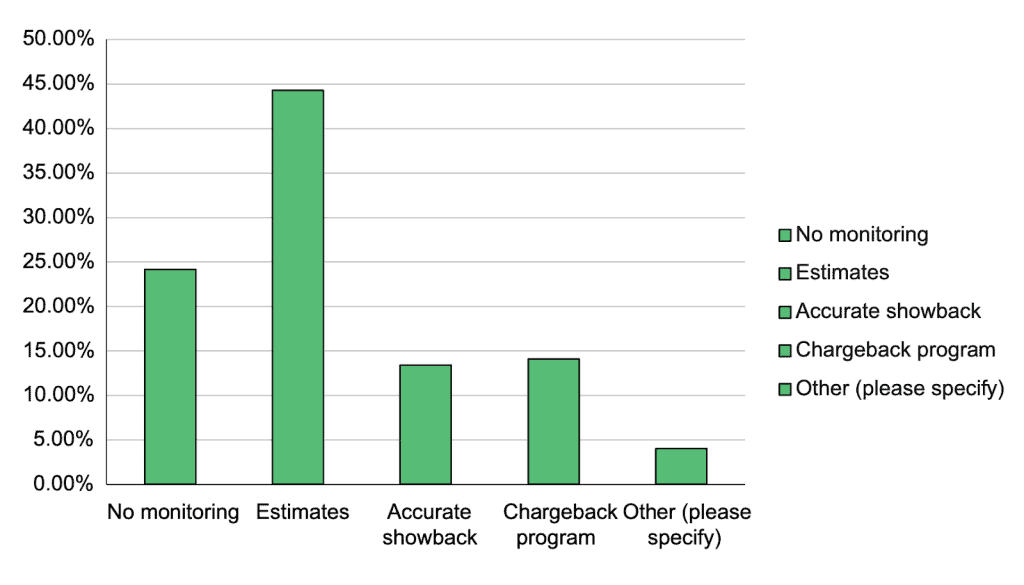
A success case: “CloudSprint“
We’ll dive into the cost optimization journey of a company known as “CloudSprint” (note: the company name is for illustrative purposes only). As we follow “CloudSprint” through their challenges and triumphs in managing Kubernetes costs, we invite you to join us on this enlightening adventure. Together, we will uncover the key strategies, tools, and best practices that can be leveraged to manage and optimize costs in Kubernetes environments effectively. So, come along with us as we embark on this journey and discover how Acme Enterprises tackled its cost management obstacles in Kubernetes.
This company is called “CloudSprint,” which provides a cloud-based platform for virtual racing events. CloudSprint uses Kubernetes to manage its infrastructure and ensure smooth and scalable operations. By implementing the practices outlined in this article, CloudSprint successfully optimized its Kubernetes cost management and achieved significant benefits.
Firstly, CloudSprint created a cost management culture by fostering awareness among its development, operations, and finance teams. They emphasized the importance of cost optimization and encouraged everyone to take ownership of resource usage. This cultural shift led to increased accountability and a shared commitment to cost efficiency.
Secondly, CloudSprint established collaboration between teams. The development team worked closely with the operations and finance teams to identify cost-saving opportunities. They collaborated to identify idle or underutilized resources, right-sized their Kubernetes environment by adjusting resource allocations based on workload demands, and regularly communicated to ensure cost-related decisions aligned with business objectives.
Furthermore, CloudSprint invested in educating its teams on cost management practices and documented these practices as part of its internal knowledge base. This enabled them to establish best practices for resource provisioning, scaling, and cost monitoring, leading to more informed decision-making and reduced wastage.
CloudSprint also implemented several strategies outlined in the article. They right-sized their Kubernetes environment by accurately determining the required resources for each workload, avoiding overprovisioning, and minimizing unnecessary costs. They utilized Kubernetes labels effectively, enabling granular cost tracking for different application components, allowing them to allocate costs accurately and identify areas of potential optimization.
Additionally, CloudSprint made cost monitoring and alerting a daily operation. They leveraged Kubernetes cost management tools like Kubecost, which provided real-time insights into resource usage and cost allocation. Regularly reviewing cost data and setting up alerts for abnormal spending patterns allowed them to proactively identify and address cost anomalies, ensuring better control over their cloud spending.
As a result of these practices, CloudSprint experienced notable benefits. They achieved significant cost savings by eliminating unnecessary resource allocations and optimizing their Kubernetes environment. Improved cost management efficiency allowed them to allocate their budget more effectively and invest in other growth initiatives. Additionally, CloudSprint observed enhanced performance and cost optimization, enabling them to scale their virtual racing events seamlessly while maintaining cost controls. Real-time cost visibility and control empowered them to make data-driven decisions and allocate resources based on actual usage, leading to improved financial management and overall business sustainability.
By implementing effective cost management practices in their Kubernetes environment, CloudSprint achieves significant cost savings. With a well-optimized Kubernetes, they could create savings in the first quarter by 18%, and after one year, they achieved 47%. The successful case of CloudSprint demonstrates the transformative power of proper cost management in Kubernetes, showcasing the immense potential for organizations to optimize their cloud spending and achieve financial efficiency in their operations.
Conclusion
Yes, We know reading all this can be exhausting. More exhausting than configuring Kubernetes. But I hope that article takes you to the conclusion by adopting the key principles, strategies, and tools discussed in this article. Organizations can harness the power of Kubernetes cost management, optimize their cloud spending, and unlock financial efficiency. Embracing these practices and continuously improving cost management efforts will position businesses for long-term success in their Kubernetes deployments.
So, join the ranks of organizations that have transformed their cost management in Kubernetes, and embark on a journey toward cost optimization and financial sustainability. Take the first step today and discover the immense potential that effective Kubernetes cost management holds for your organization.
Did you know that managing costs in Kubernetes is like battling the legendary creature “Gultharak the Overspender”? Like a skilled wizard wielding the power of cost management tools, you can tame the beast and save your budget from its fiery breath!
Now, let’s look ahead to our next adventure together. Our upcoming article delves into advanced techniques for dynamic resource allocation and container-level cost optimization and uncovers secret hacks to squeeze even more savings from your Kubernetes infrastructure. Get ready to level up your cost management game!
So, fellow Kubernetes cost management adventurers, grab your virtual armor and join us in our next quest! Together, we’ll continue unraveling the mysteries of cost optimization and uncover hidden treasures of financial efficiency. Until then, may your containers be light, your costs below, and your geekiness guide you on this epic journey!
See ya
o/

